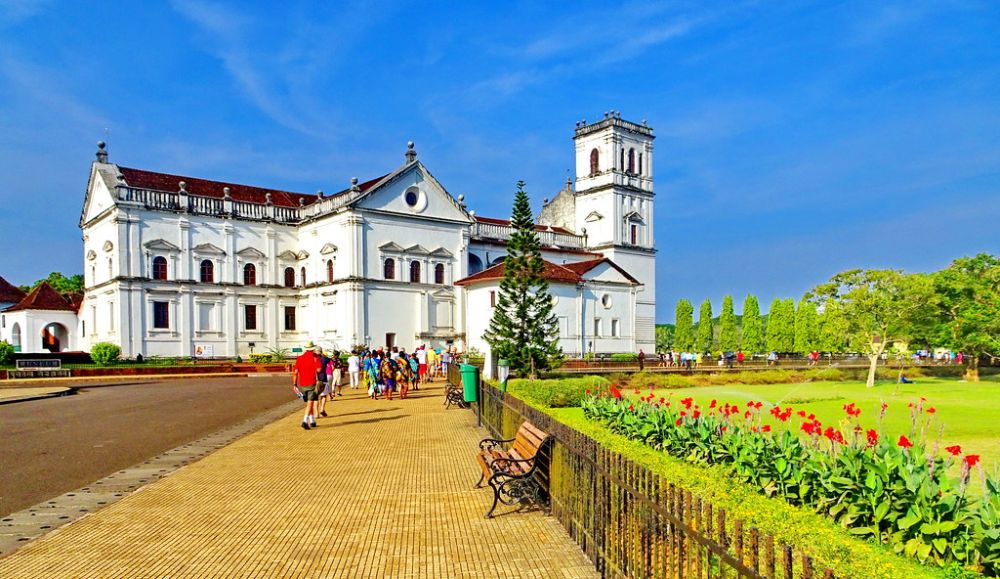

The Se Cathedral in North Goa stands as one of the most venerable and imposing landmarks in Goa, India. Dedicated to Saint Catherine, the cathedral holds significant religious, cultural, and historical importance. Established in the 16th century by the Portuguese during their colonisation of Goa, Se Cathedral stands as a testament to the grandeur and the religious fervour of the time.
The history of tourism at Se Cathedral began shortly after it was consecrated in 1640. Originally built to commemorate the Portuguese victory over the Muslim rulers in the city, the cathedral soon began to attract visitors for its architectural splendour and religious significance.
The cathedral's magnificent architecture, with its Tuscan exterior and Corinthian interior, is one of the largest cathedrals in Asia. The renowned Golden Bell, famed for its rich tone, is one of the cathedral's many attractions that allure tourists.
As Goa became a popular destination for hippies in the 1960s and 70s, Se Cathedral's fame grew parallelly. The following decades saw the Government of India and Goa Tourism Development Corporation take active steps in promoting Goa, and in turn Se Cathedral to travelers around the world. In 1986, UNESCO declared the Se Cathedral, as part of the Churches and Convents of Goa, a World Heritage Site, solidifying its place on the global tourism map.
In recent years, Se Cathedral has continued to be a focal point for visitors. Tourists flock to North Goa not only for its beaches but also to immerse themselves in its rich colonial history. The cathedral's influence on the cultural and religious tourism sector in Goa is undeniable.
One of the latest trends in tourism is the growing popularity of heritage walks that include Se Cathedral. These walks allow tourists to appreciate the eclectic mix of Indian and Portuguese cultures found in the architecture and local customs.
The trend of sustainable and responsible tourism has also found its way into the region. Visitors are encouraged to respect the sacred nature of the site and engage with the local community in a way that supports their livelihoods without disrupting tradition.
The COVID-19 pandemic had a profound effect on tourism worldwide, and Se Cathedral was not immune to its impacts. The temporary halt in tourism provided a period of rest for the monument, and as travel restrictions have eased, there is a focus on offering more personalized and safer experiences for visitors.
Post-pandemic recovery efforts in tourism around Se Cathedral are seeing an increase in domestic visitors. There is an emphasis on digital integration, enabling virtual tours and online information platforms, making the cathedral accessible to those unable to visit in person.
Annually, the feast of St. Catherine is celebrated with great pomp and is an especially popular time for tourists to visit the cathedral. The fusion of solemn religious observance with vibrant cultural festivities highlights the unique charm that continues to attract visitors to Se Cathedral.
Se Cathedral stands as a proud beacon of Goa's rich historical tapestry. Its role in the tourism industry of North Goa has evolved over centuries, and today, it remains one of the most cherished landmarks for travellers seeking history, spirituality, and architectural awe.